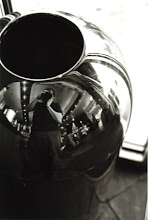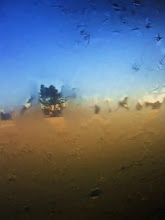






Now that 2011 has come and gone I was reflecting back over the past year, which of course included travel. That coupled with the recent passing of Václav Havel made me think back to earlier in 2011 when we rented a flat in Prague spending nearly two weeks there. Our place was in New Town just a few blocks from Wenceslas Square, and well within walking distance of Old Town Square and the well-known Charles Bridge connecting the Lesser Town with the Old Town.
We saw a lot of the typical (by typical I don’t mean to lessen some of the things we took in, I only mean things commonly experienced) sights like Prague Castle, Old Town Square, Old Town Hall, Charles Bridge, the Jewish quarter, Lennon Wall, and more. While taking in Prague for more than a few days, we decided to take a few day trips to get outside of the city.
One of the day trips we did from Prague was to Kutna Hora. Kutna Hora is a quaint medieval town about 65 km south-east of Prague known for its silver mining in the 13th century, and it also served as the mint for the Habsburg Empire. While there we went through St. Barbara’s Cathedral which is a beautiful gothic cathedral built between 1388 and 1558. We also stopped off to see the Bone church in Sedlec. The inside of this church is decorated with human bones (over 40,000 people) as it was a much sought after place to be buried and space eventually became limited. According to legend, a half-blind monk originally decided to stack the bones into pyramids nearly reaching the ceiling. Later, in 1870, František Rint, a local wood carver/carpenter, was commissioned to creatively arrange the bones. Displaying the bones not only served as an artistic expression, but also as a symbolic example of acknowledging mortality.
We also visited Terezin which is about 60km North of Prague in the direction of Dresden. We went through the Jewish ghetto as well as Terezin Concentration Camp. Terezin was not a traditional killing camp (although a lot of people died there) but more of a transit camp where Jews were usually transferred onto killing centers, concentrations camps, and forced-labor camps. Terezin was also unique in that it was a ghetto-labor camp that was used as a “model camp” as an example of how well the people there were supposedly treated at such camps. While such camps are pretty heavy and dark, one positive thing I took away from the visit was how the human spirit will fight for individuality, as there were many musicians, writers, and artists who continued to create even under such horrible conditions.
Over and over again I was reminded how much people are willing to fight for the ability to freely express themselves. The Czechs were taken over by so many different groups of people over the centuries, but they did not lose their identity.



No comments:
Post a Comment